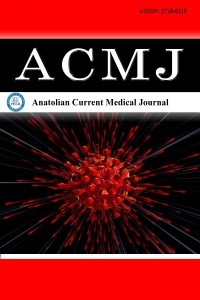1.
Lev M. The architecture of the conduction system in congenital heart disease. I. Common atrioventricular orifice. AMA Arch Pathol. 1958; 65(2):174-191.
2.
Gerbode F. Surgical repair of endocardial cushion defect. Ann Chir Thorac Cardiovasc. 1962;1:753-755.
3.
Backer CL, Mavroudis C. Atrioventricular canal defects. In: Mavroudis C, Backer CL, eds. Pediatric Cardiac Surgery. 3<sup>rd</sup> ed. Philadelphia: Mosby; 2003.
4.
Mitchell SC, Korones SB, Berendes HW. Congenital heart disease in 56.109 live births. Incidence and natural history. Circulation. 1971;43(3): 323-332. doi:10.1161/01.cir.43.3.323
5.
Spicer RL. Cardiovascular disease in Down syndrome. Pediatr Clin North Am. 1984;31(6):1331-1343. doi:10.1016/s0031-3955(16)34725-3
6.
Rastelli G, Kirklin JW, Titus JL. Anatomic observations on complete form of persistent common atrioventricular canal with special reference to atrioventricular valves. Mayo Clin Proc. 1966;41(5):296-308.
7.
Trachte AL, Lobato EB, Urdaneta F, et al. Oral sildenafil reduces pulmonary hypertension after cardiac surgery. Ann Thorac Surg. 2005; 79(1):194-197. doi:10.1016/j.athoracsur.2004.06.086
8.
Nunn GR. Atrioventricular canal: modified single patch technique. Pediatr Card Surg Annu. 2007;10:28-31. doi:10.1053/j.pcsu.2007.01.009
9.
Kobayashi M, Takahashi Y, Ando M. Ideal timing of surgical repair of isolated complete atrioventricular septal defect. Interact Cardiovasc Thorac Surg. 2007;6(1):24-26. doi:10.1510/icvts.2006.134288
10.
Mills NL, Ochsner JL, King TD. Correction of Type C complete atrioventricular canal. Surgical considerations.J Thorac Cardiovasc Surg. 1976;71(1):20-28. doi:10.1016/S0022-5223(19)40256-0
11.
Meskishvili VA, İshino K, Dahnert I, et al. Correction of complete atrioventricular septal defects with the double-patch technique and cleft closure. Ann Thorac Surg. 1996;62(2):519-525. doi:10.1016/0003-4975(96)00319-0
12.
Atz AM, Hawkins JA, Lu M, et al. Surgical management of complete atrioventricular septal defect: associations with surgical technique, age, and trisomy 21. J Thorac Cardiovasc Surg. 2011;141(6):1371-1379. doi:10. 1016/j.jtcvs.2010.08.093
13.
Xie O, Brizard CP, d'Udekem Y, et al. Outcomes of repair of complete atrioventricular septal defect in the current era. Eur J Cardiothorac Surg. 2014;45(4):610-617. doi:10.1093/ejcts/ezt444
14.
Tumanyan MR, Filaretova OV, Chechneva VV, Gulasaryan RS. Repair of complete atrioventricular septal defect in infants with Down syndrome: outcomes and long-term results. Pediatr Cardiol. 2015;36(1):71-75. doi: 10.1007/s00246-014-0966-7
15.
Bakhtiary F, Takacs J, Cho MY, et. Al. Long-term results after repair of complete atrioventricular septal defect with two-patch technique. Ann Thorac Surg. 2010;89(4):1239-1243. doi:10.1016/j.athoracsur.2009.11.017
16.
Li D, Fan Q, Iwase T, Hirata Y. Modified single-patch technique versus two-patch technique for the repair of complete atrioventricular septal defect: a meta-analysis. Pediatr Cardiol. 2017;38(7):1456-1464. doi:10. 1007/s00246-017-1684-8
17.
Jeong IS, Lee CH, Lee C, et al. Surgical outcomes of the modified single patch technique in complete atrioventricular septal defect. Interactive Cardiovasc Thoracic Surg. 2009;8(4):435-438. doi:10.1510/icvts.2008. 192872
18.
Pan G, Song L, Zhou X, Zhao J. Complete atrioventricular septal defect: comparison of modified single-patch technique with two-patch technique in infants. J Card Surg. 2014;29(2):251-255. doi:10.1111/jocs. 12295
19.
Ginde S, Lam J, Garick DH, et al. Long term outcomes after surgical repair of complete atrioventricular defect. J Thorac Cardiovasc Surg. 2015;150(2):369-374. doi:10.1016/j.jtcvs.2015.05.011
20.
Prifti E, Bonacchi M, Baboci A, Giunti G. Surgical outcome of reoperation due to left atrioventricular valve regurgitation after previous correction of complete atrioventricular septal defect. J Card Surg. 2013;28(6):756-763. doi:10.1111/jocs.12231
21.
Harmandar B, AydemirNA, Karaci AR, et al. Results for surgical correctionof complete atrioventricular septal defect: associations with age, surgical era and technique. J Card Surg. 2012;27(6):745-753. doi:10. 1111/jocs.12016
22.
Salihoğlu E, Özkan S, Özçobanoğlu S, et al. Preliminary results of direct closure of an atrioventricular septal defect: revisiting the original technique. Turk J Thorac Cardiovasc Surg. 2012;20(4):699-704. doi:10. 5606/tgkdc.dergisi.2012.141
23.
Li D, Fan Q, Iwase T, et al. Modified single patch technique versus two patch technique for the repair of complete atrioventricular septal defect: a meta-analysis. Pediatr Cardiol. 2017;38(7):1456-1464. doi:10.1007/s00246-017-1684-8
24.
Draguescu A, Fouilloux V, Ghez O, et al. Complete atrioventricular canal repair under 1 year: Rastelli one-patch procedure yields excellent long term results. Ann Thorac Surg. 2008;86(5):1599-1606. doi:10.1016/j.athoracsur.2008.07.002
25.
Prifti E, Bonacchi M, Bernabei M, et al. Repair of complete atrioventricular septal defect with tetralogy of fallot. J Card Surg. 2004; 19(2):175-183. doi:10.1111/j.0886-0440.2004.04031.x
26.
Backer CL. Commentary: defining the limits of the modified single-patch technique. J Thorac Cardiovasc Surg. 2023;165(2):422-423. doi:10. 1016/j.jtcvs.2022.08.011
27.
Kobayashi Y, Kasahara S, Sano S, Kotani Y. Modifiedsingle-patch repair for atrio-ventricular septal defects results in good functional outcomes in the absence of deep ventricular septal defects. J Thorac Cardiovasc Surg. 2023;165(2):411-421. doi:10.1016/j.jtcvs.2022.07.041

